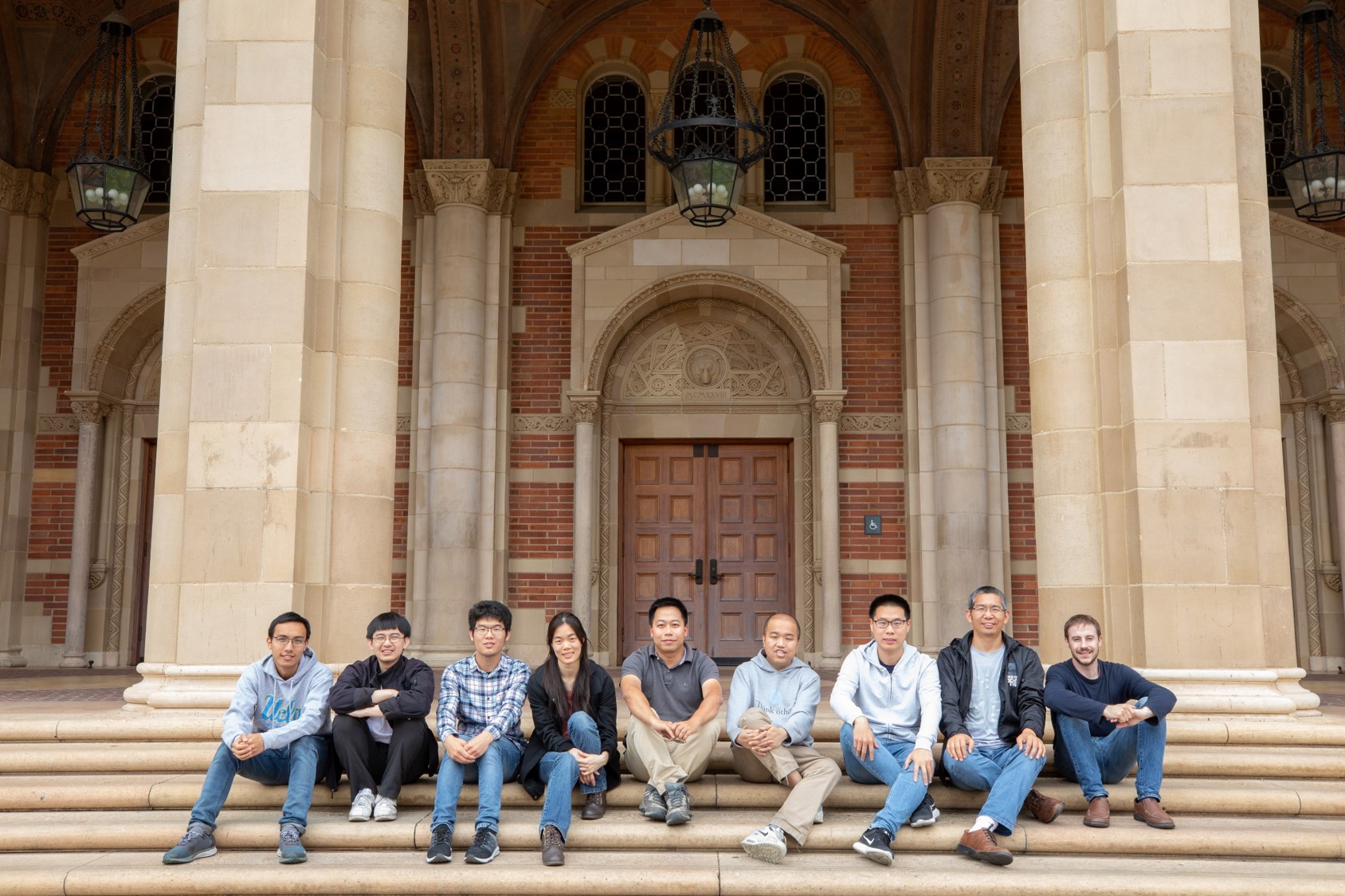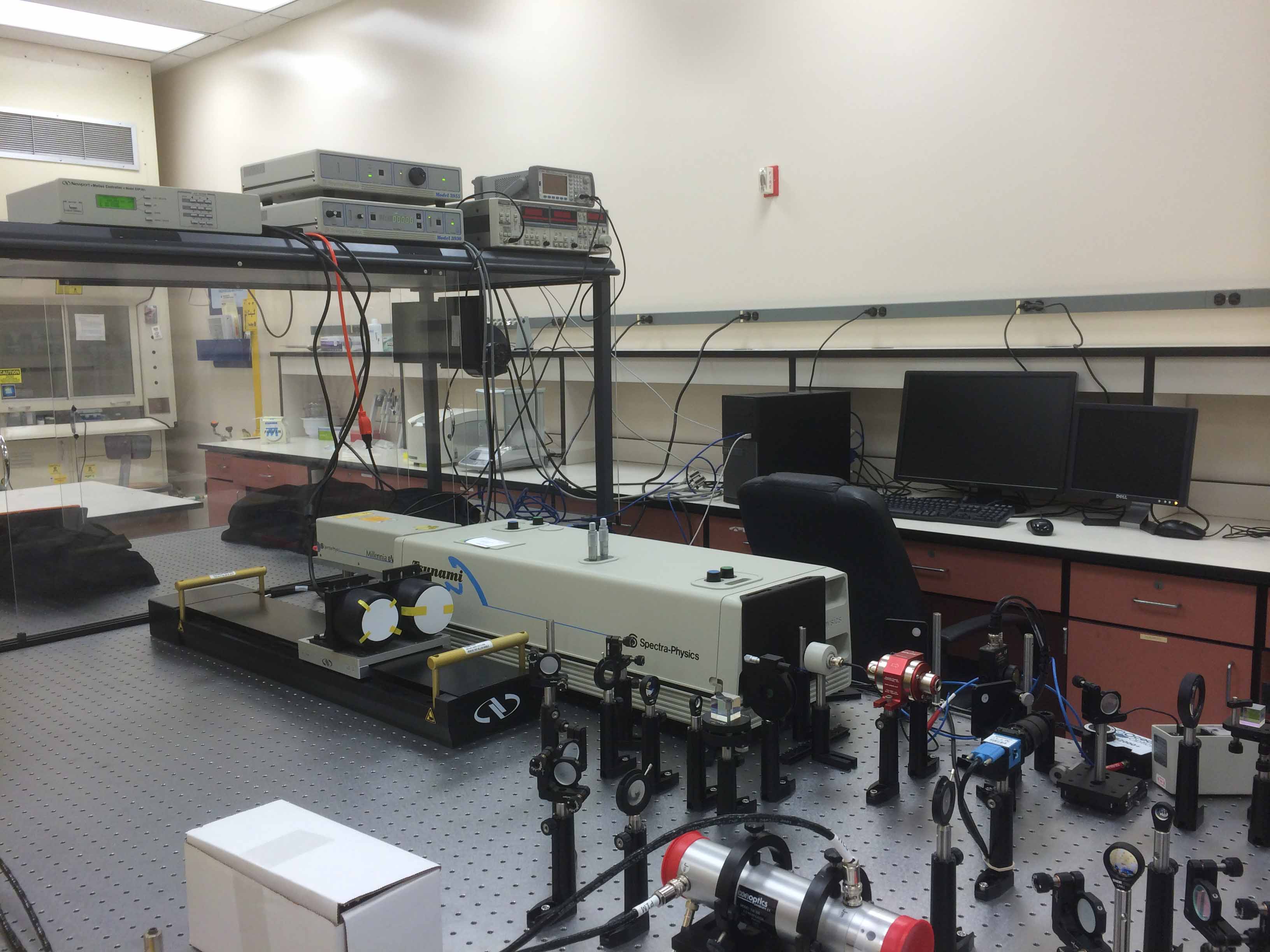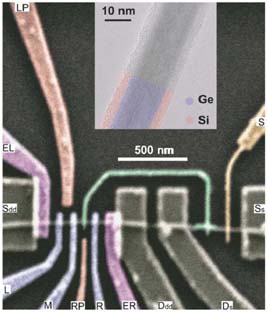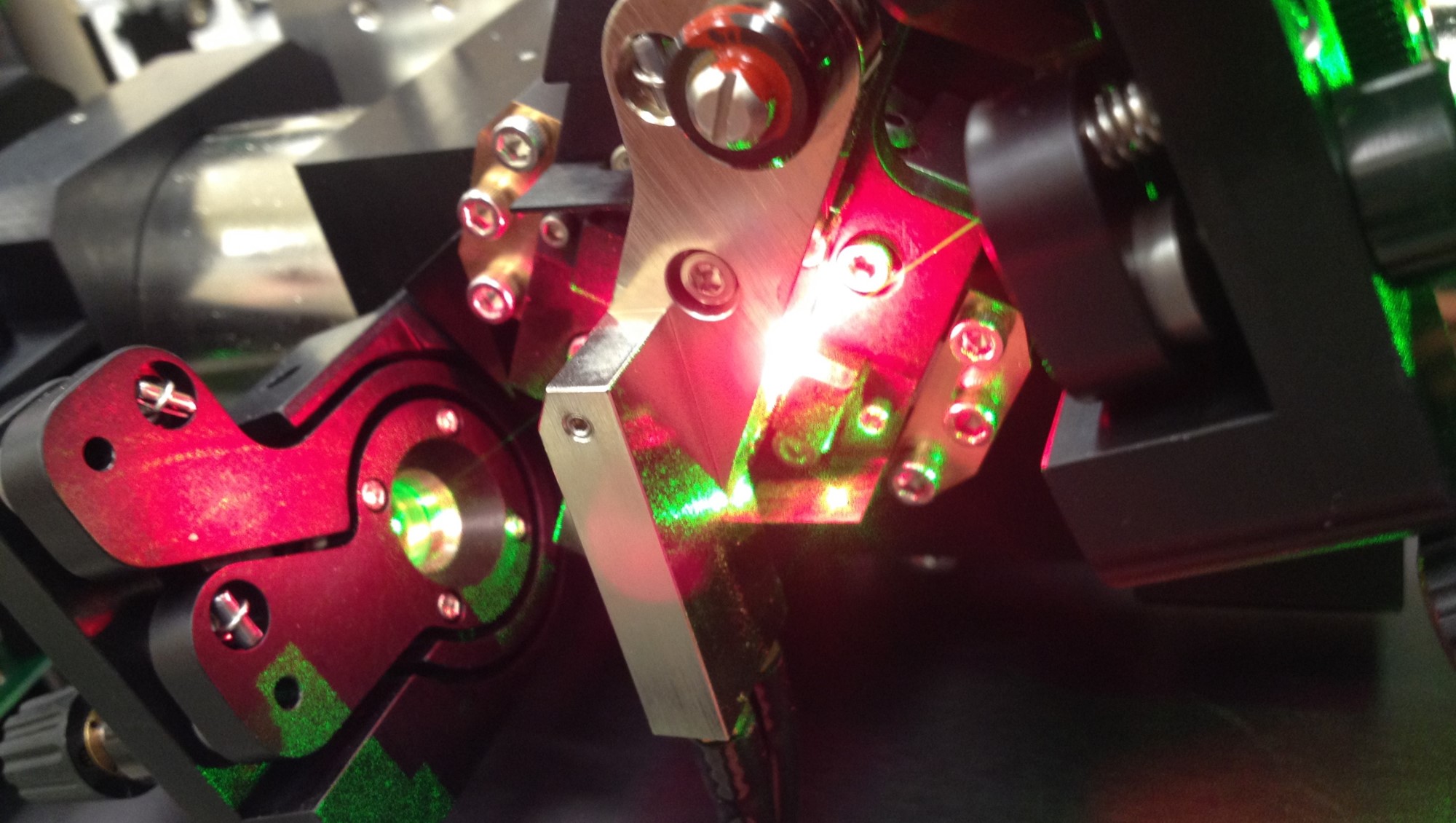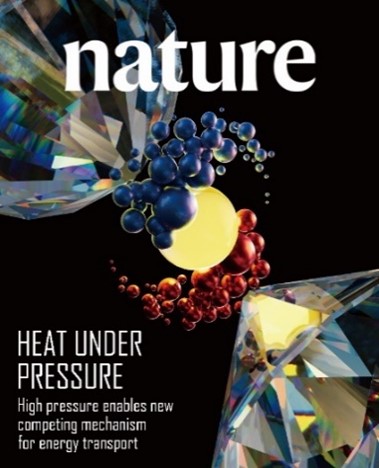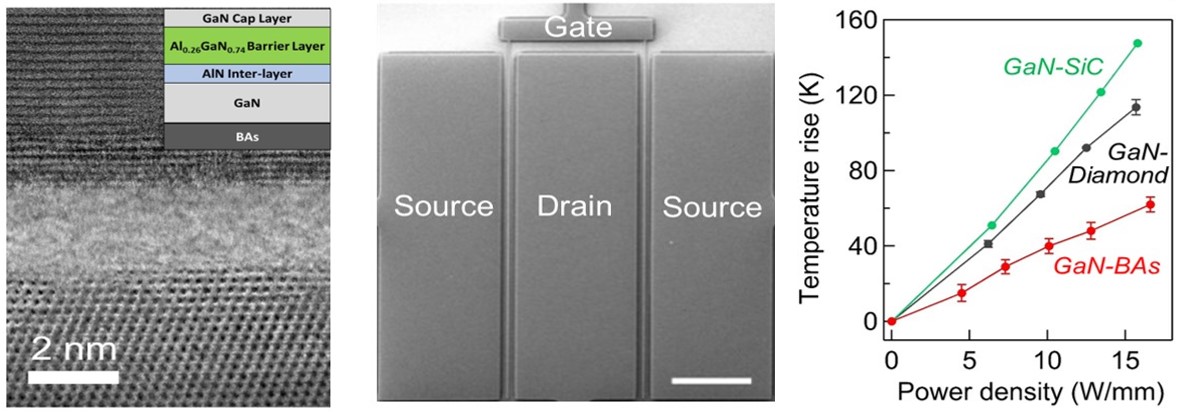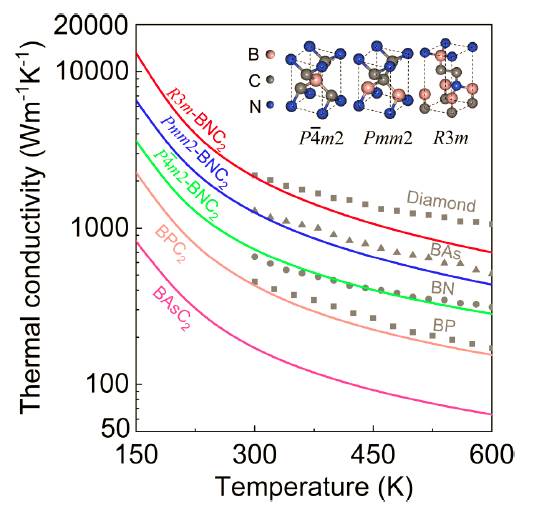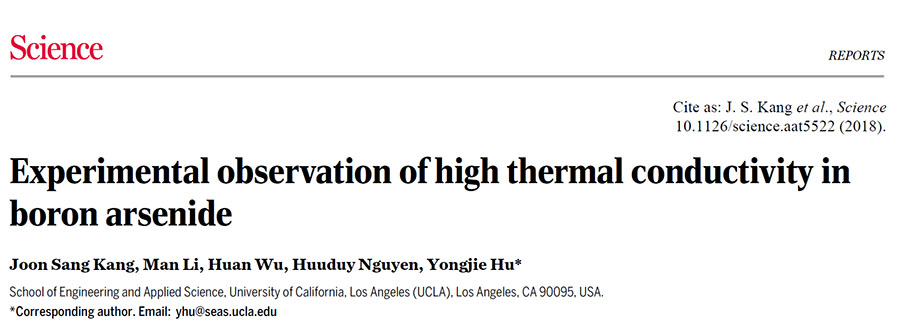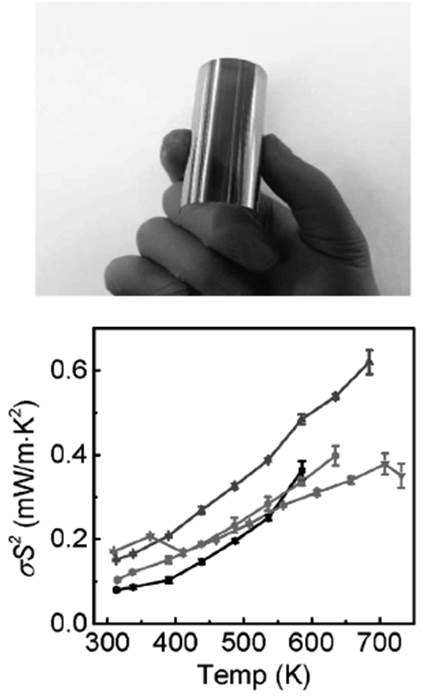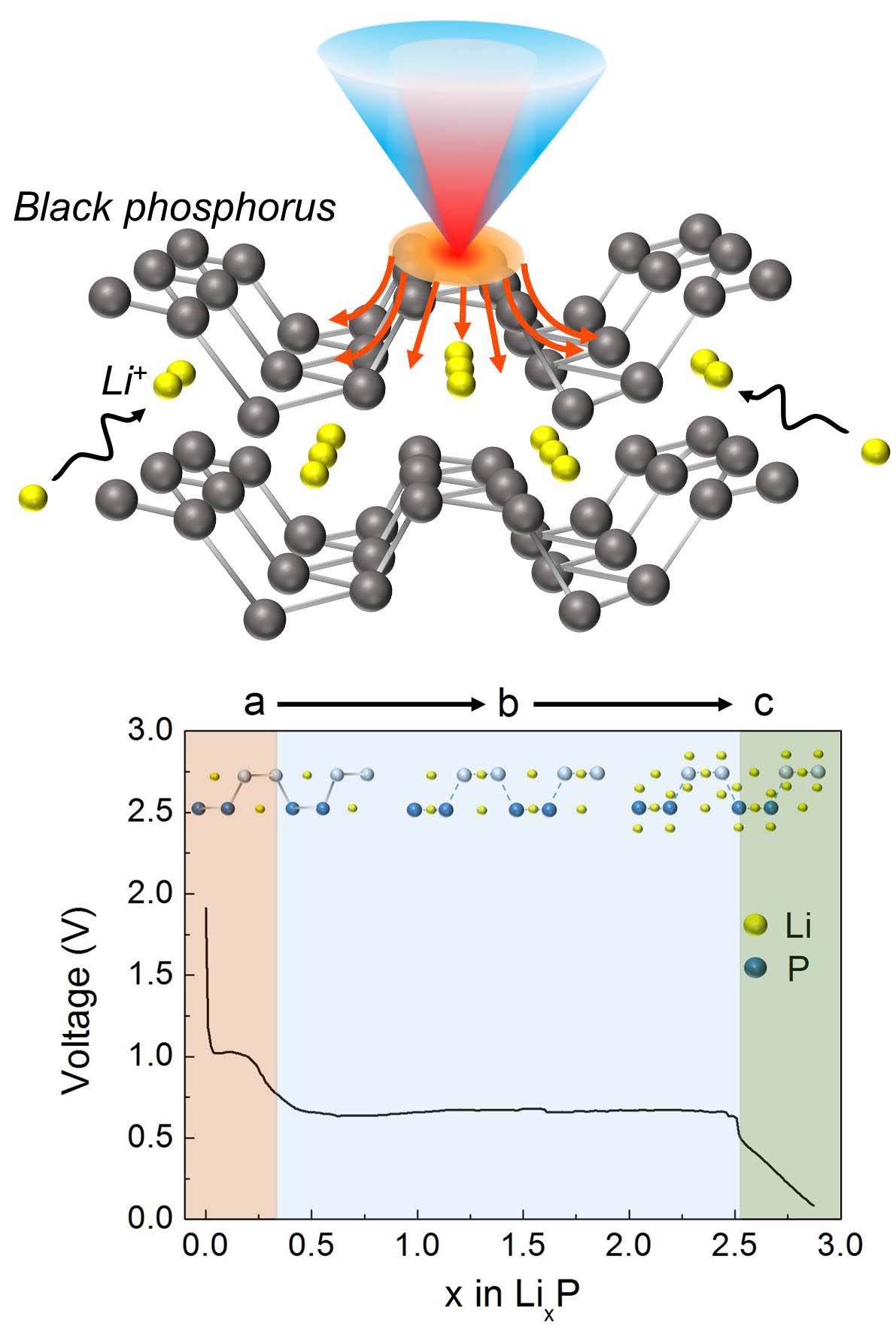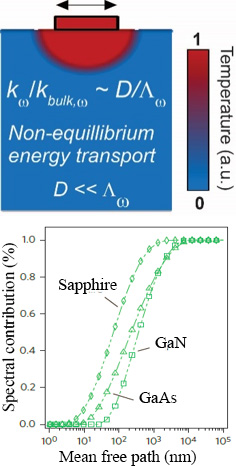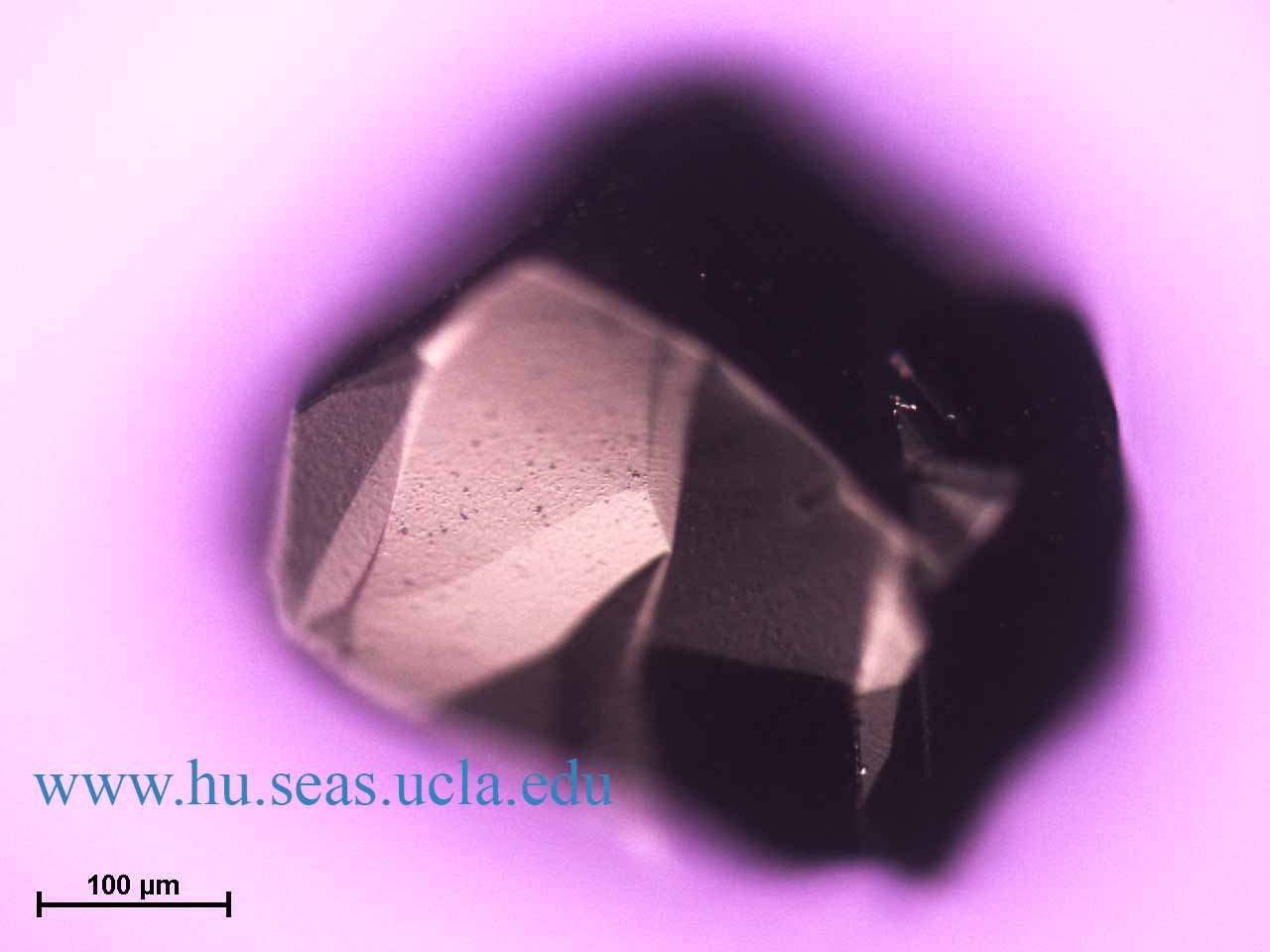News
Congratulations to our recent graduate, Huan Wu, on starting as an Assistant Professor at Arizona State University! Wishing you all the best in this exciting new chapter. July 1, 2025
Congratulations to our recent graduate, Huu Nguyen, on starting his new career at Sandia National Laboratories! Wishing you all the best in this exciting next chapter! October 1, 2024
Congratulations to our recent graduate, Man Li, on starting as a professor at USTC. Best of luck! August 1, 2024
Our development of antiviral structures for sustainable control of infectious diseases is published online. July 17, 2024
Our study with Fisher and Goorsky groups demonstrated wafer-scale bonding of GaN-AlN with high interface thermal conductance. July 17, 2024
Our new study reporting thermal transport on Moire graphene published in Advanced Materials. March 15, 2024
Our thermal management research was selected as the Top 10 Semiconductor Stories of 2023 by IEEE Spectrum. Feb 28, 2024
Thanks for the nice article in Scientific American that highlights our research. Jan 8, 2024
See UCLA news highlight on our recent study. Nov 9, 2023
Our study on dynamic tunning over thermal transport is published in Science! Congratulations to Man, Huan, Zihao, Huu, and wonderful collaboration team! Nov 3, 2023
Congrats to Huu Nguyen for passing the PhD exam! Nov 2, 2023
Congrats to our recent PhD graduate Ming Ke for starting her career at NASA Goddard Center! October 1, 2023
Welcome new PhD students: Chuanjin and Zhihan joined the group from Tsinghua and Shanghai Jiaotong. Sept 1, 2023
Our research has been highlighted by Scientific American, National Science Foundation, and National Academy of Engineering. April 28, 2023
See UCLA news highlight on our recent study. Nov 28, 2022
Our study on thermal energy transport under extreme conditions is published in Nature! Congratulations to Suixuan, Zihao, Huan, Man! Nov 30, 2022
Man and Lingyun published on machine Learning for harnessing thermal energy. Oct 1, 2022
Congratulations to Joon for starting as an assistant professor in KAIST. Best of luck! September 1, 2022
Zihao, Man, and Jessica's paper published on thermal management materials for energy-efficient and sustainable future buildings. Oct 19, 2021
Our research published in Nature Electronics: Our work developed heterogenous integration of BAs with wide bandgap semiconductors for device cooling of AlGaN/GaN HEMTs. Congratulations to Joon, Man, Huan, and Huu! June 18, 2021
Our research published in Nature Communications: Ying's paper on developing flexible thermal management for electronics and soft robotics. February 28, 2021
Huan and Hang's paper on ultrahigh thermal conductivity was accepted for publication. January 1, 2021
Congrats to H-Lab students, Ying, Zihao, and Suixuan for all passing the PhD Qualifying Exam! Dec 21, 2020
UCLA Samueli School of Engineering recognized Yongjie with the Vernroy Makoto Watanabe Excellence in Research Award for outstanding accomplishments in research. Feb 22, 2020
Our work on demonstrating complementary doping of van der Waals materials for monolithically integrated electronic circuits was published. Jan 2020
Ying and Man's paper on thermal inferface materials for nanoelectronics was published. Jan 2020
Yongjie received the 2019 Bergles-Rohsenow Young Investigator Award in Heat transfer. Thanks for the recognition by ASME! Nov 12, 2019
We developed an experimental database that reports systematically the optical, mechanical, and thermal properties of cubic boron arsenide. The work was published and featured in Appl. Phys. Lett. Also see the APL Scilight. Sept 16, 2019
Hang, Huan, and Lucas' theory work on "Ab initio investigation of single-layer high thermal conductivity boron compounds" was published in Phys. Rev. B. July 24, 2019
Joon and Huan's work on investigating the intrinsic ultralow thermal conductivity and phonon renormalization due to strong anharmonicity of tin selenide is published in Nano Letters. July 2, 2019
Man's work on studying interface energy transport and anisotropic thermal boundary resistance for near-junction thermal management was published in Advanced Materials. June 24, 2019
Yongjie is selected to participate in the National Academy of Engineering's 2019 U.S. Frontiers of Engineering. June 1, 2019
Our work was published on developing a facile ambient process for manufacturing ultralight, flexible, and superhydrophobic thermal insulator. May 27, 2019
H-Lab student Joon Sang Kang has been awarded the Gold medal for this year's MRS Graduate Student Award for his outstanding PhD research. Congratulations! April 30, 2019
Yongjie is selected as 2019 Alfred P. Sloan Research Fellow! Many thanks for the honor and support from Sloan Foundation! Feb 19, 2019
Huu's work on developing nanoscale sensors and systems beyond solid state electronics was published online: high-performance emitter for nanoscale vacuum channel transistors. Jan 22, 2019
Nicolas's work was accepted for publication, demonstrating flexible thin film devices to recover lower-grade waste heat and power electronics and sensors. Jan 21, 2019
Our group developed a new metrology for anisotropic thermal conductivity measurement. Man and Joon's new technique using an elliptical laser beam, i.e., AB-TDTR was published in Rev. Sci. Instruments. Aug 2, 2018
Our group's study on developing high thermal conductivity boron arsenide was published in Science magzine! This is a highly interdisciplinary project that requires precise materials synthesis, comprehensive structural characterizations, accurate thermal transport measurement, and atomistic ab-initio calculations: Congratulations and thank H-Lab students for the hard work to get it done! See UCLA news here. July 05, 2018
Yongjie received 2018 UCLA Faculty Career Development Award. June 21, 2018
Congrationlations to H-Lab student, Joon Sang Kang, for receiving UCLA Northrop Grumman Corporation Scholarship, for his outstanding graduate research! April 16, 2018
Yongjie received NSF CAREER Award! Many thanks for the support from the National Science Foundation!! Feb 21, 2018
Congratulations to H-Lab students, Joon and Huan for passing their PhD Qualifying Exams! Dec 18, 2017
Congratulations on Joon and Huan's paper published in Nano Letters: Thermal and phonon spectral characterization for energy-efficient thermal management! Nov 8, 2017
Yongjie received the Doctoral New Investigator Award from the American Chemical Society (ACS)! Many thanks for the support from ACS PRF!! June 23, 2017
New paper on high-performance flexible thin film thermoelectric devices published in Advanced Materials. March 29, 2017
Our new paper published in Nano Letters! This is the first time demonstration of in situ thermal-electrochemical characterization of a 2D van der Waals material based lithium ion battery. Feb 23, 2017
Our team is awarded a competitive research grant as part of UCLA Sustainable LA Grand Challenge! Many thanks to the Sustainable LA Grand Challenge and the Anthony and Jeanne Pritzker Family Foundation!! Dec 21, 2016
Yongjie has received the Air Force Young Investigator Award! Many thanks for the support from AFOSR!! Oct 12, 2016
Electrical-gate tuning of thermoelectric transport in single heterostructure nanowires is published on J. Appl. Phys. . June 15, 2016
We have received a grant support from the US Department of Energy, together with Professors Pilon, Dunn, and Tolbert. We very much appreciate the generous support from DOE! May 20, 2016
Developing a refined technique to measure phonon mean free path distributions is published on Scientific Reports. Nov 27, 2015
Manuscript posted on arXiv: No energy transport without discord: Quantum correlations are mandatory for any energy transport. Oct 16, 2015
Congratulations for the new paper published on Nature Nanotechnology: spectral mapping of thermal conductivity through nanoscale ballistic heat transfer! June 10th, 2015
Congratulations to Joon for passing his PhD Candidacy Exam! May 15, 2015
Developing ultra-high thermal condutivity material - Boron Arsenide, is published on Appl. Phys. Lett.: the first experimental measurement on its thermal conductivity. Feb 20, 2015
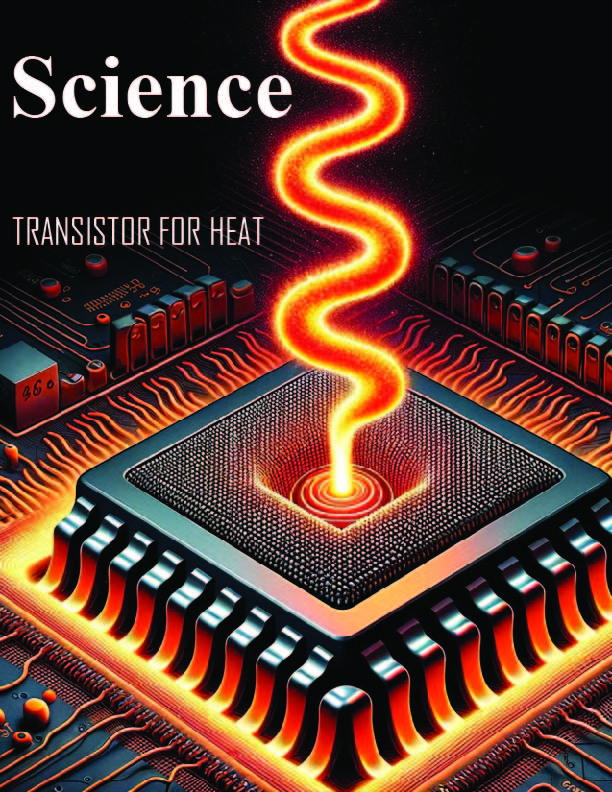 Ellectrically Gated Thermal Switch
Ellectrically Gated Thermal Switch 
